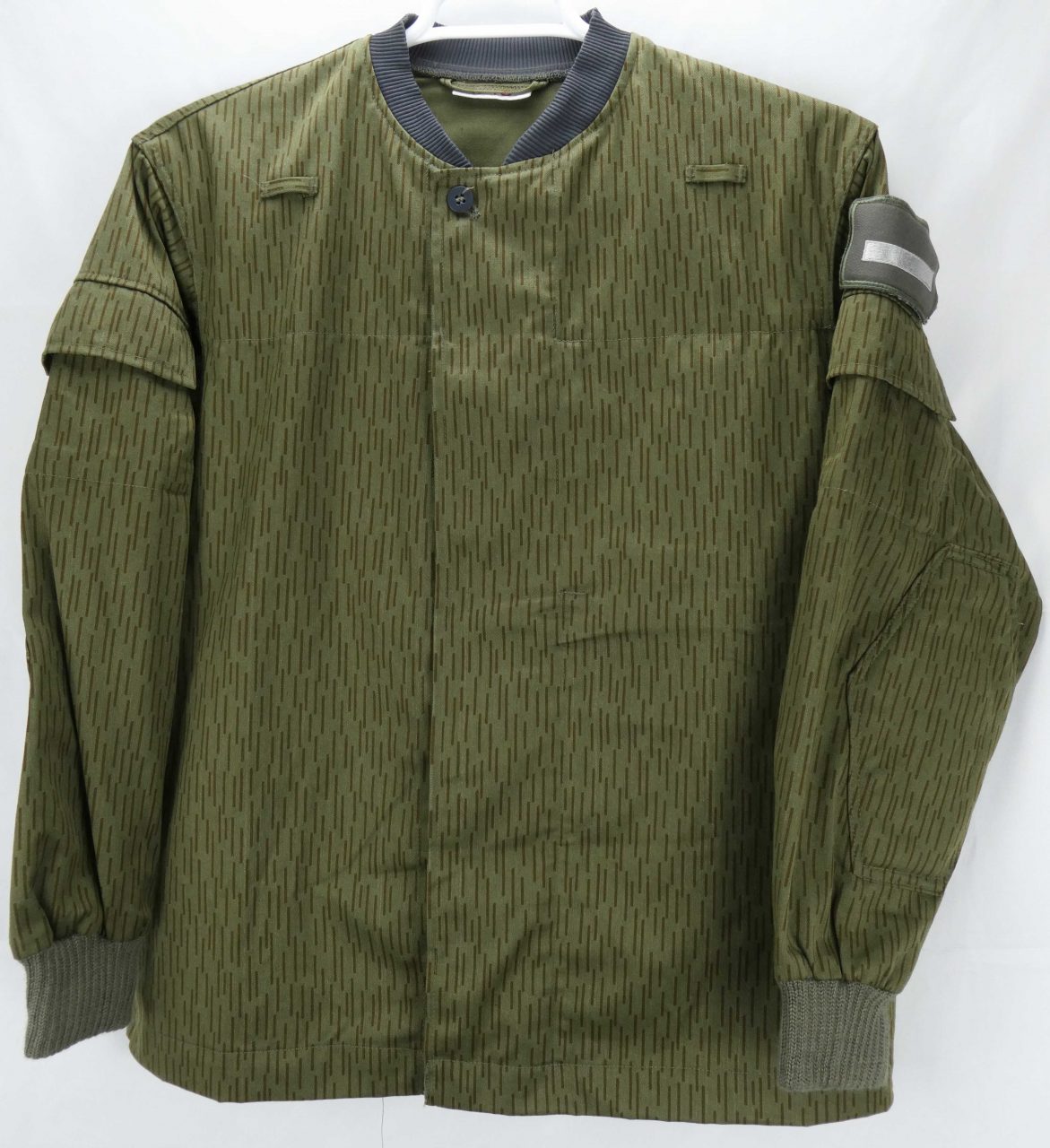Jacket:
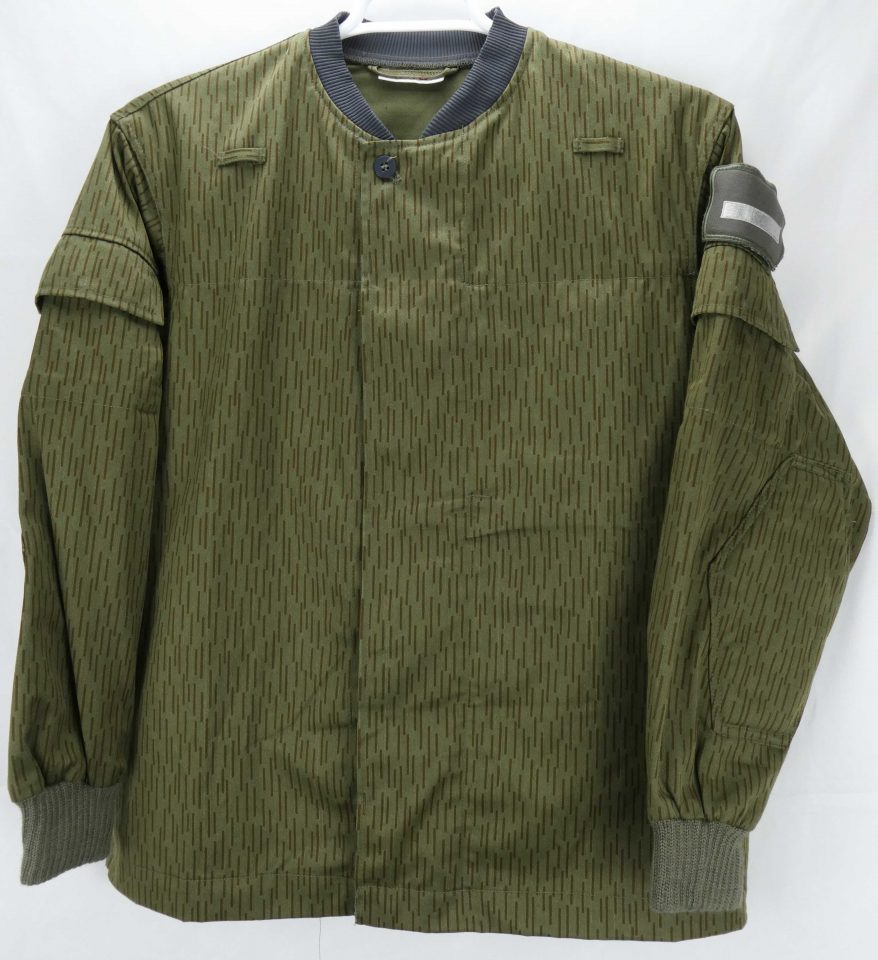
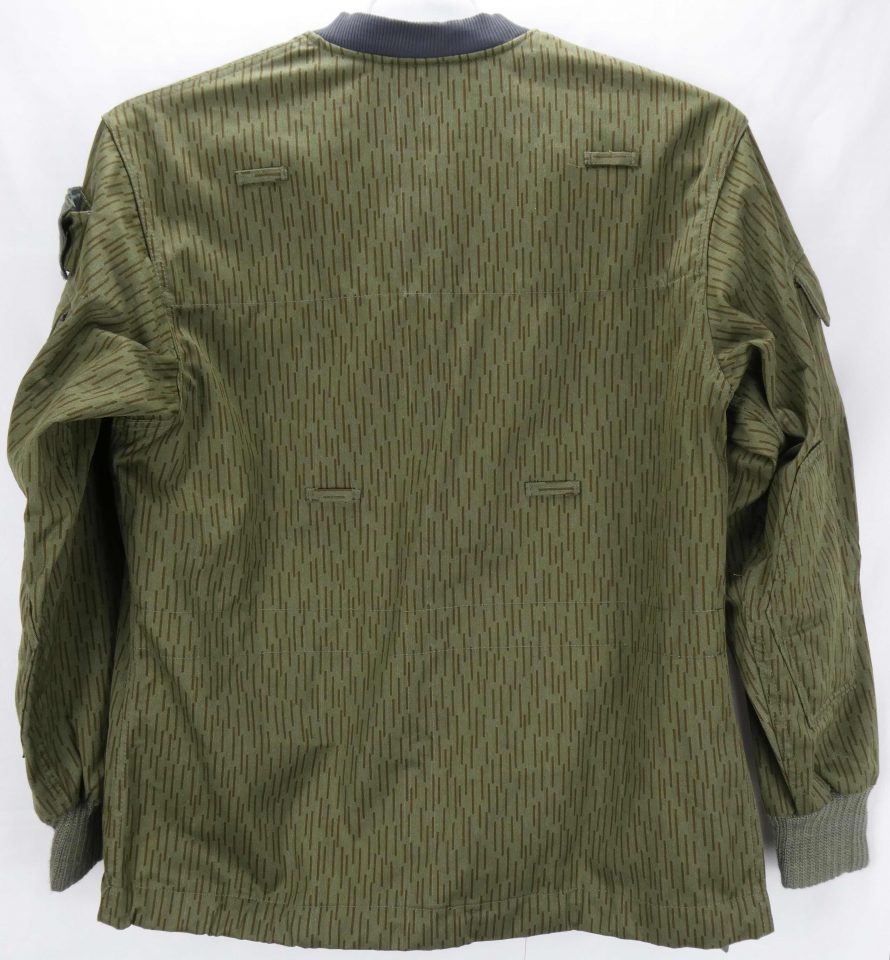
No pockets on chest because a vest was intended to be worn over the jacket.
Tag and Collar:
Stamp:

Barely legible date stamp indicates it was made for the East German Army (NVA; Nationale Volksarmee) in the first quarter of 1988 (1/Y) [1]. “1958” is not the year.
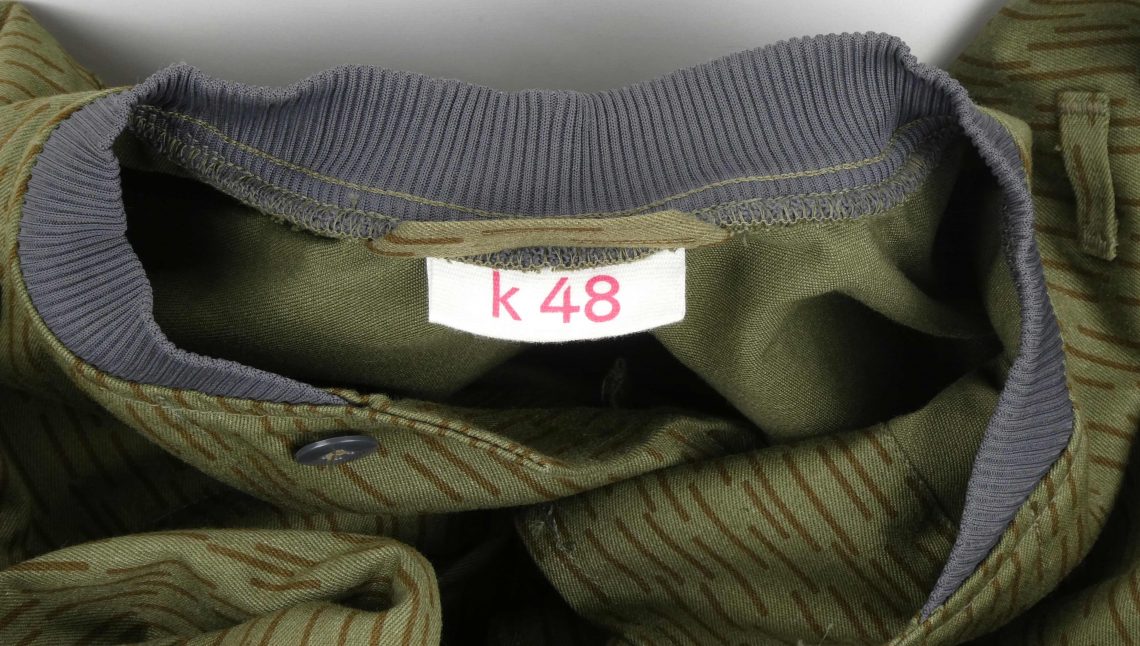
Collar has elastic like an MA-1 flight jacket. “K 48” is the size, with the “k” meaning “kurz” ( German word for short). This size is equivalent to a US Medium Short [2].
Pockets:
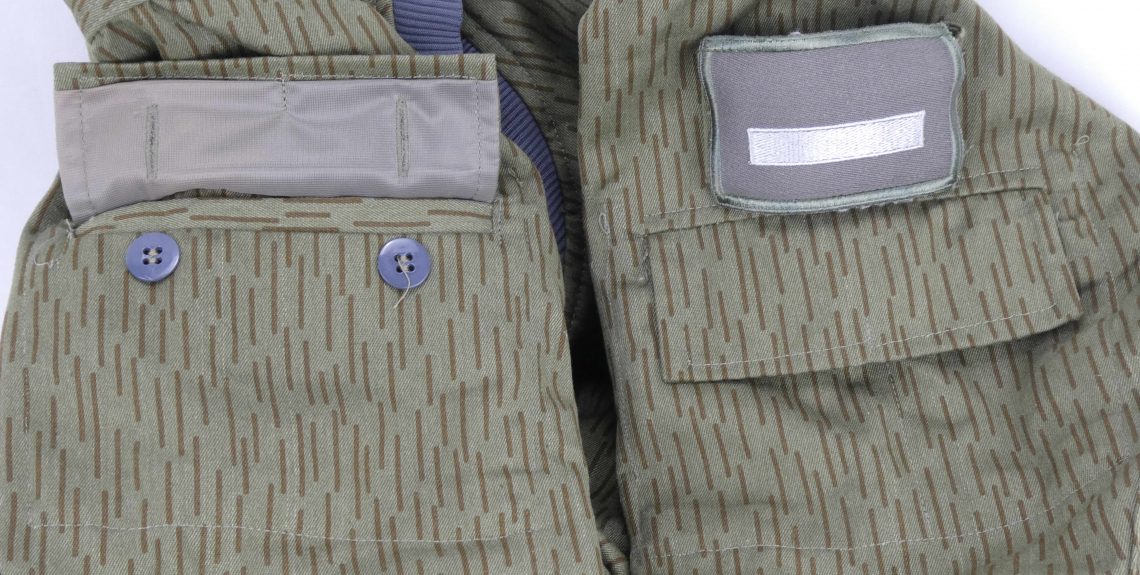
Internal pockets are only on the arms. The rank slip is for a Gefreiter (equivalent to a Private First Class [3]).
Rank Slip Loop:
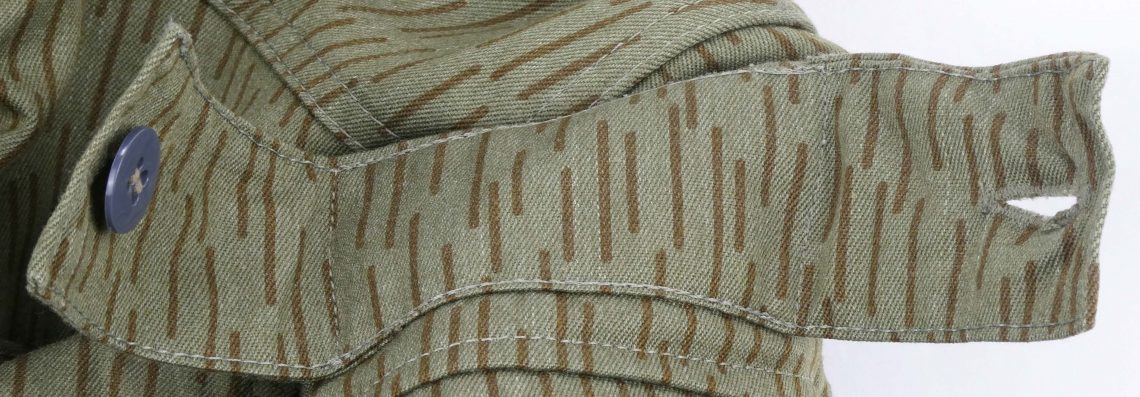
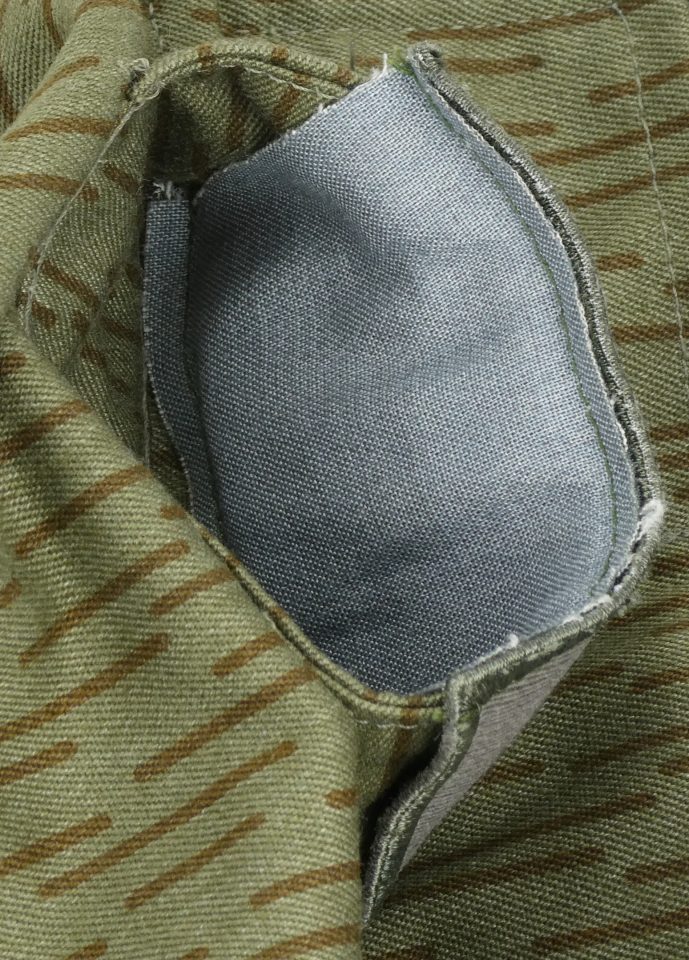
Rank slip goes on a buttoned fabric loop.
Cuffs:
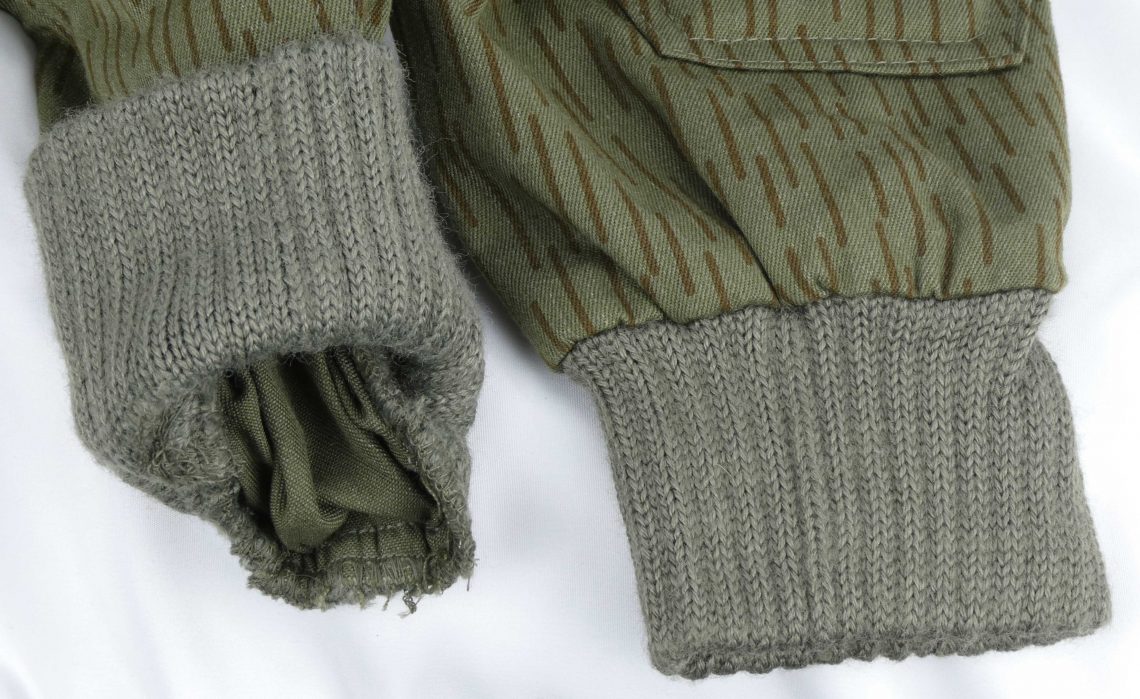
Also has elastic for insulation like the P59 Denison Smock.
Elbows:

Padded elbows.
Inside:
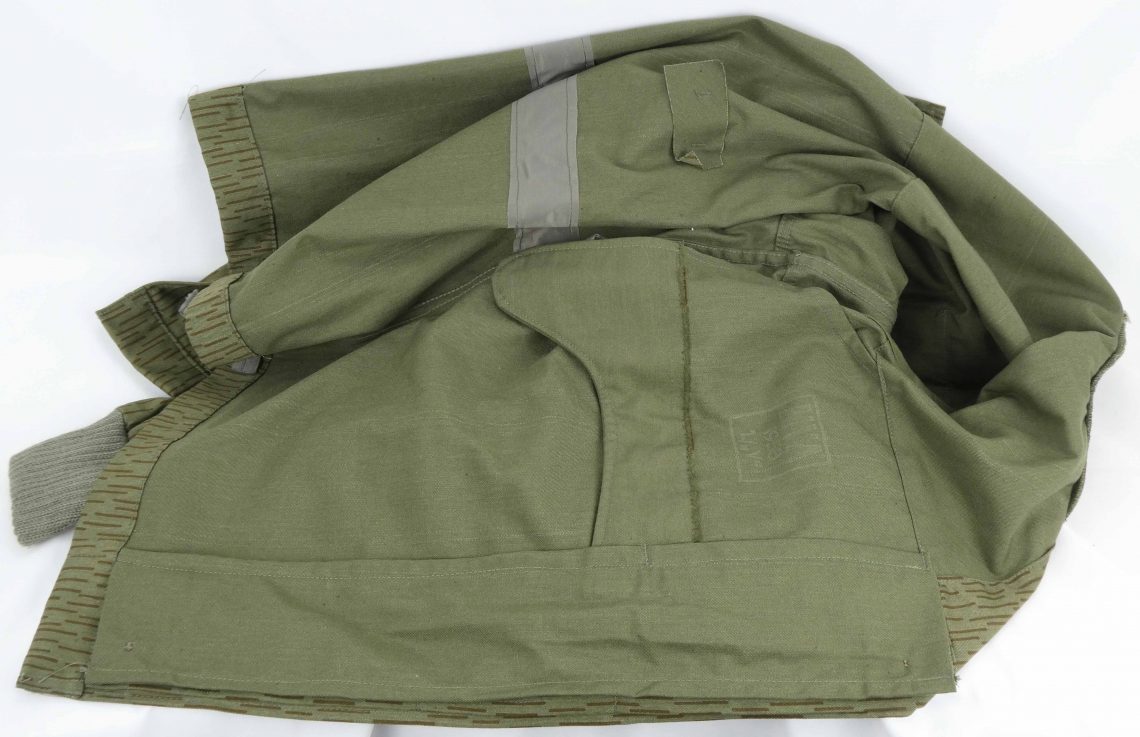
Inside of jacket as an integrated holster like the TTSkO paratrooper jacket. The fabric loops for foliage on the back are sewn onto fabric reinforcement on the inside.
Opening:
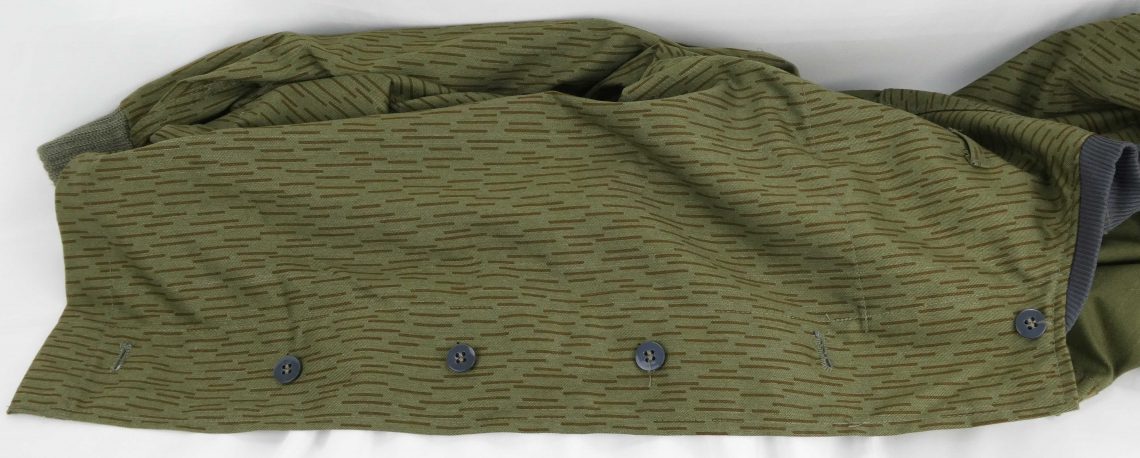

The buttons have been positioned so that the gas flap needs to be buttoned in to fully close the jacket.
Bottom:
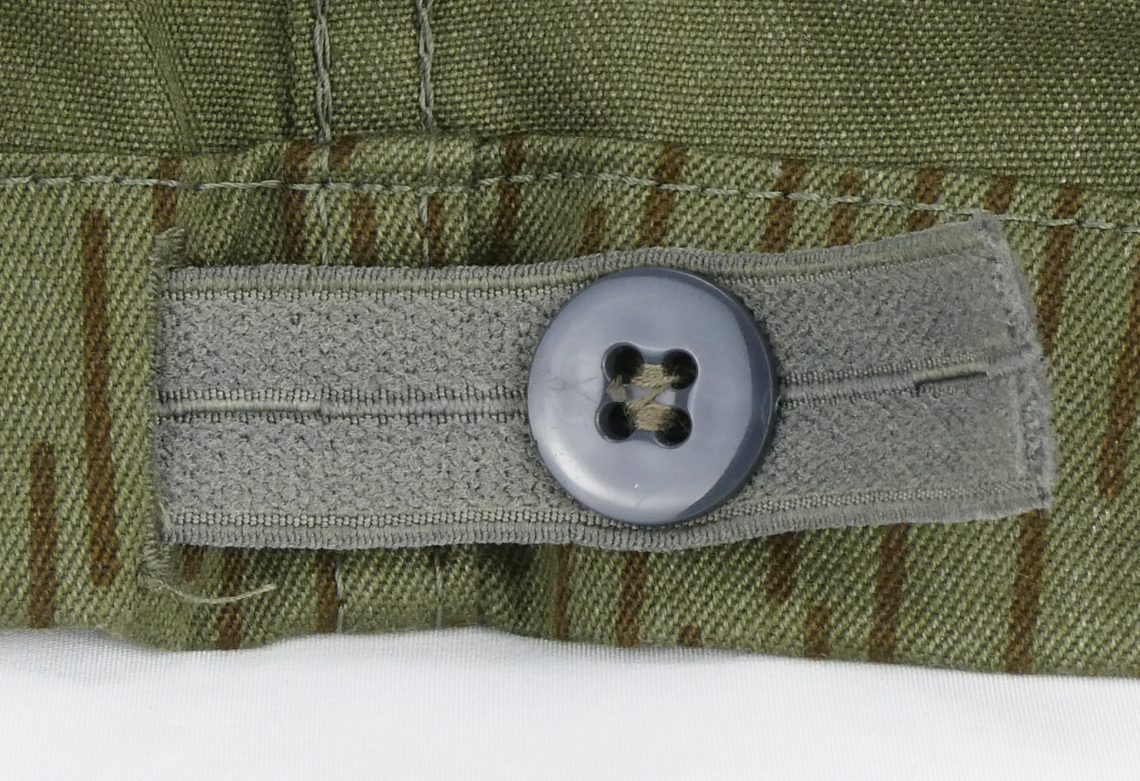
Elastic cinch, again for insulation?
Load Bearing Vest:
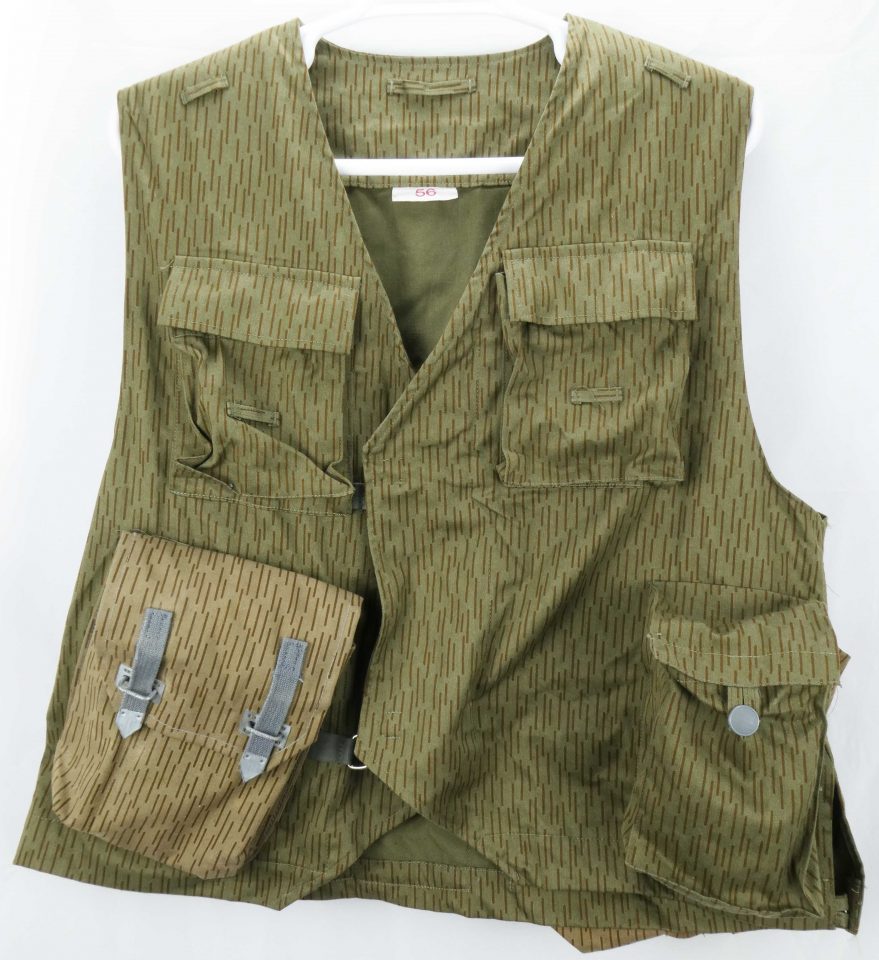
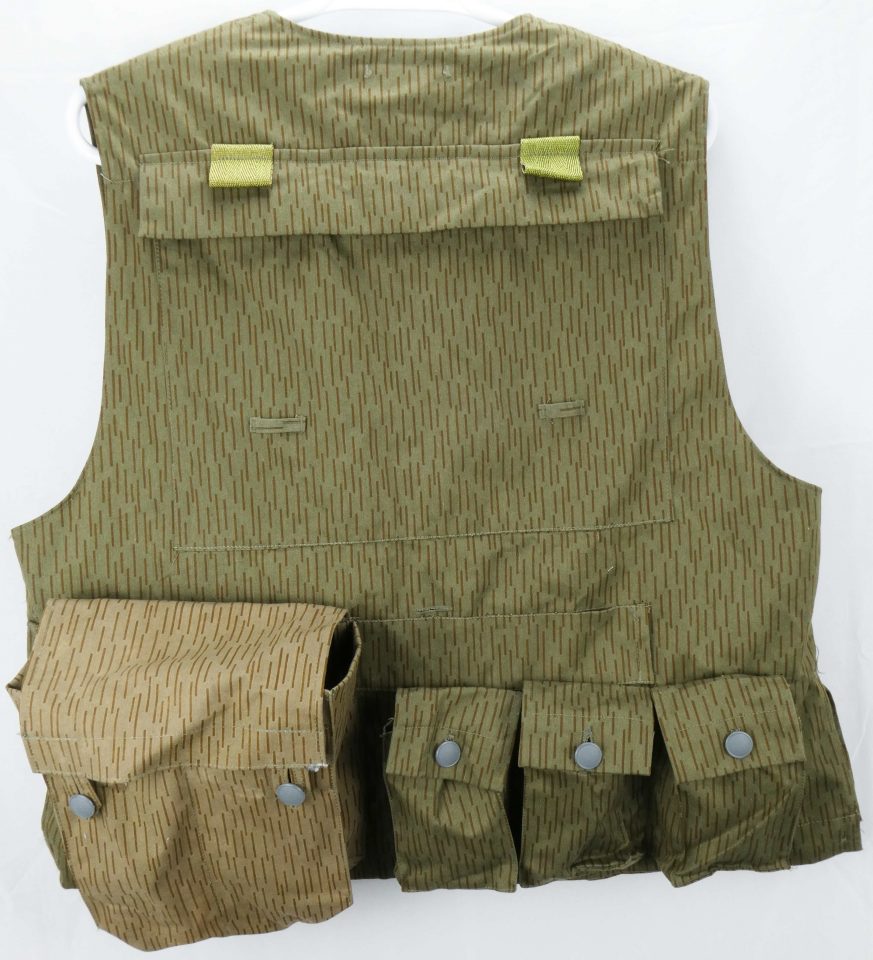
Vest body is made from same twill fabric as East German uniforms.
Button:
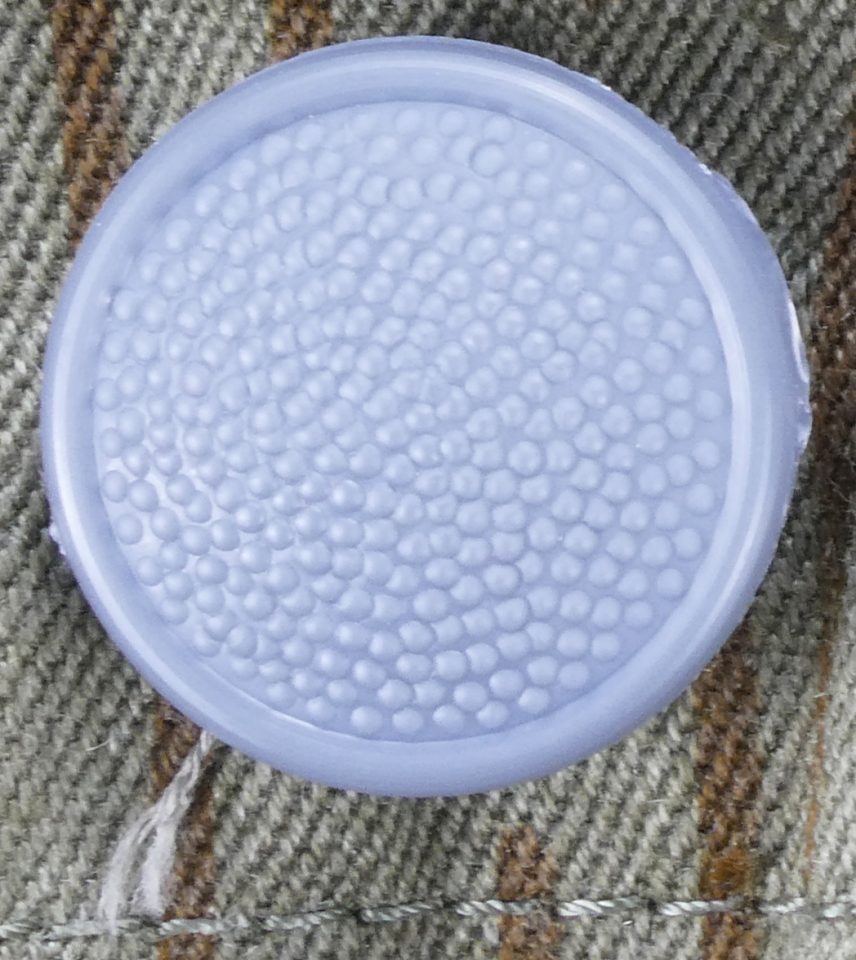
Same pebbled plastic button used on other East German uniforms.
Chest Pockets:
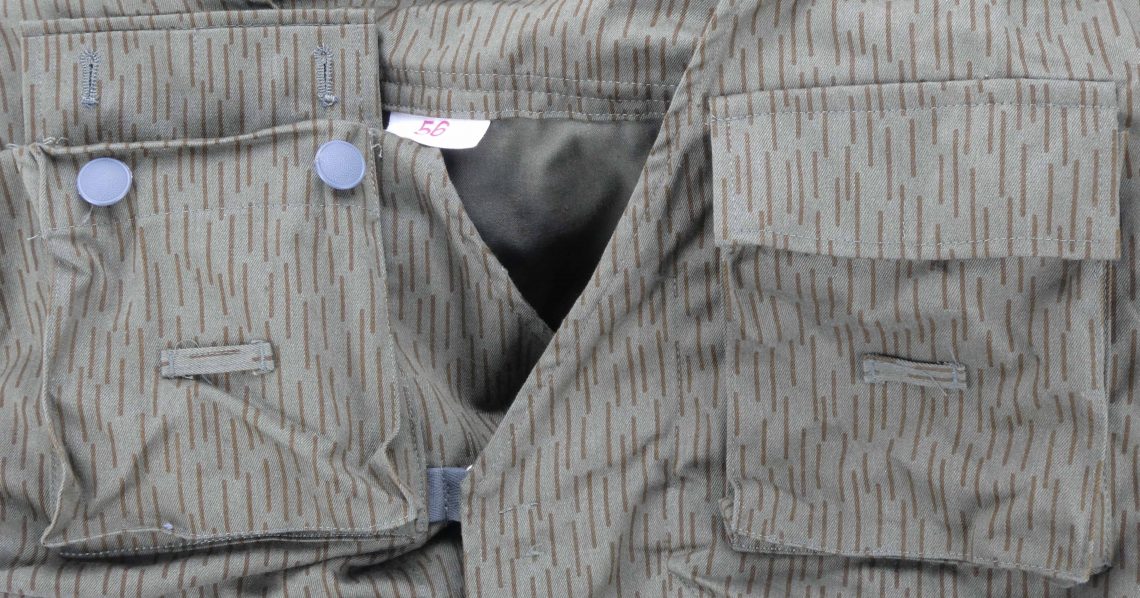
Left Bottom Front Gas Mask Bag:
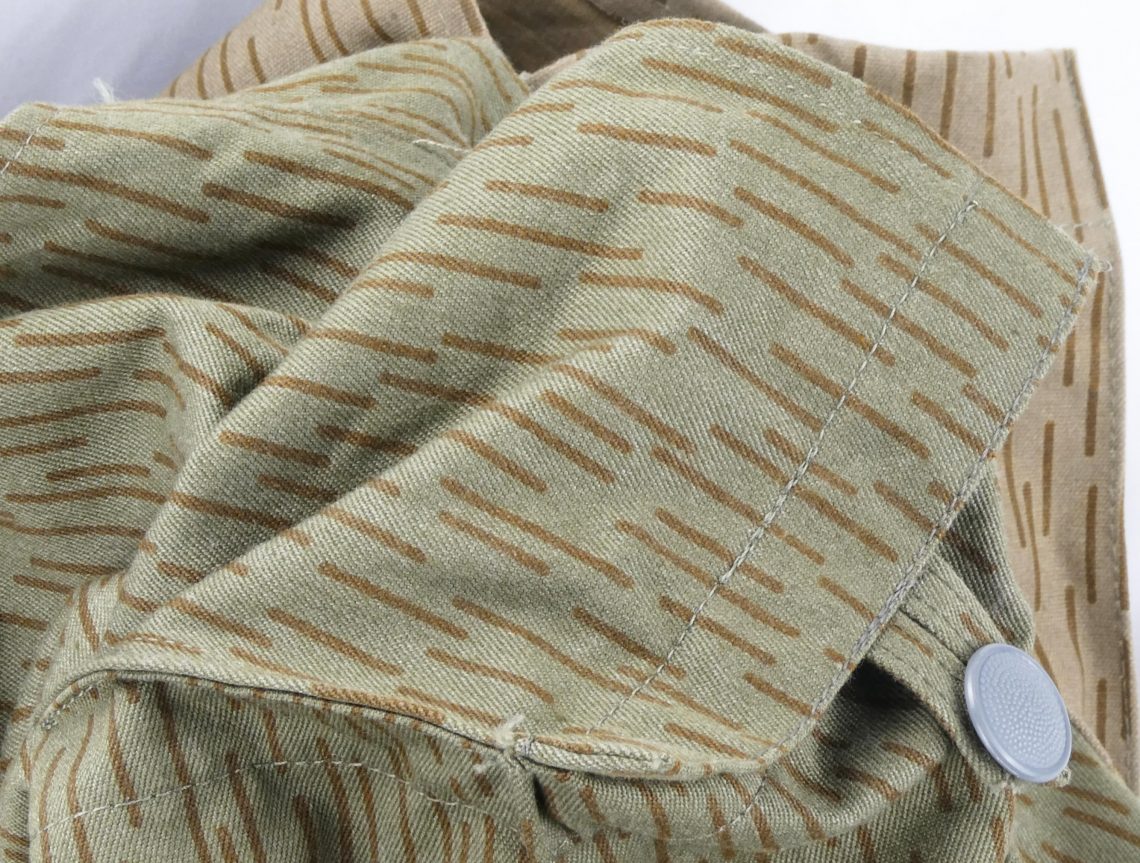
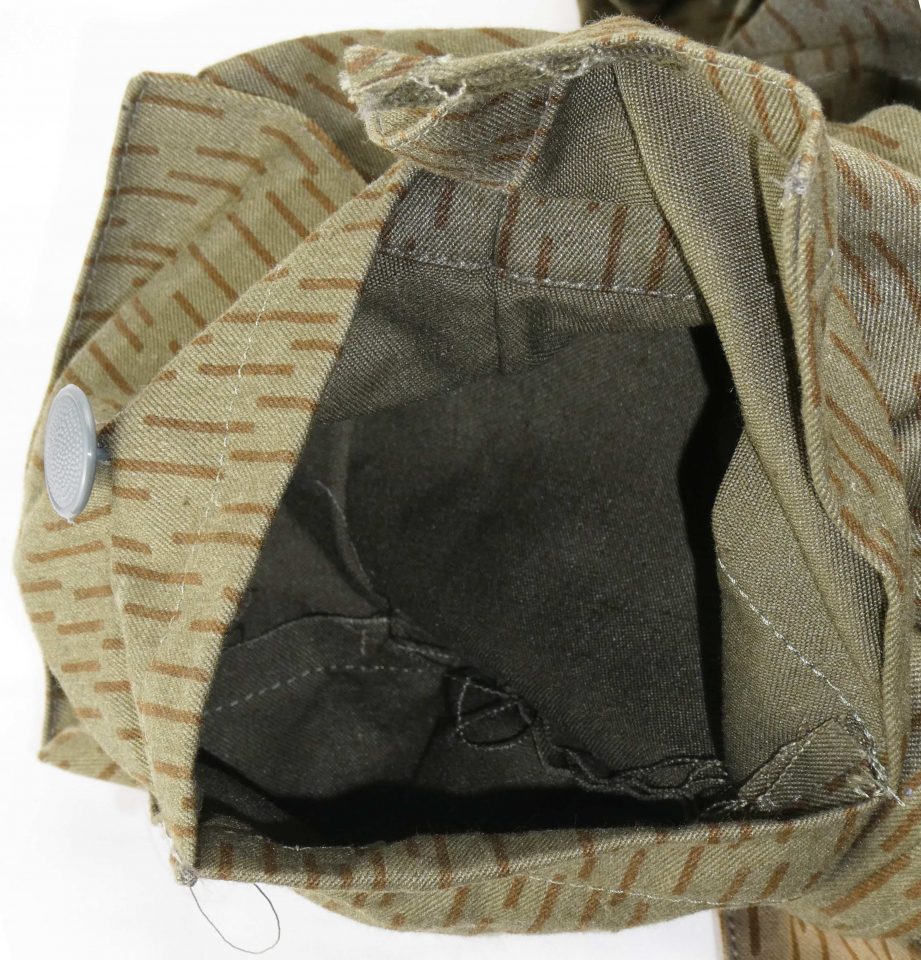
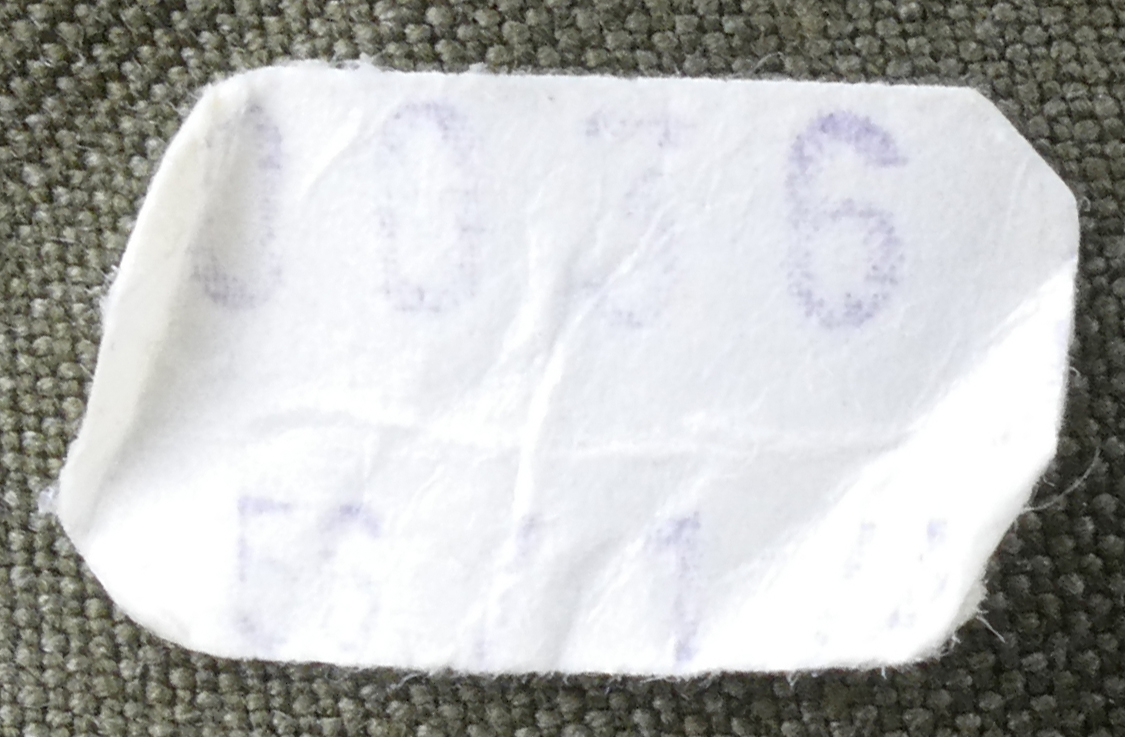
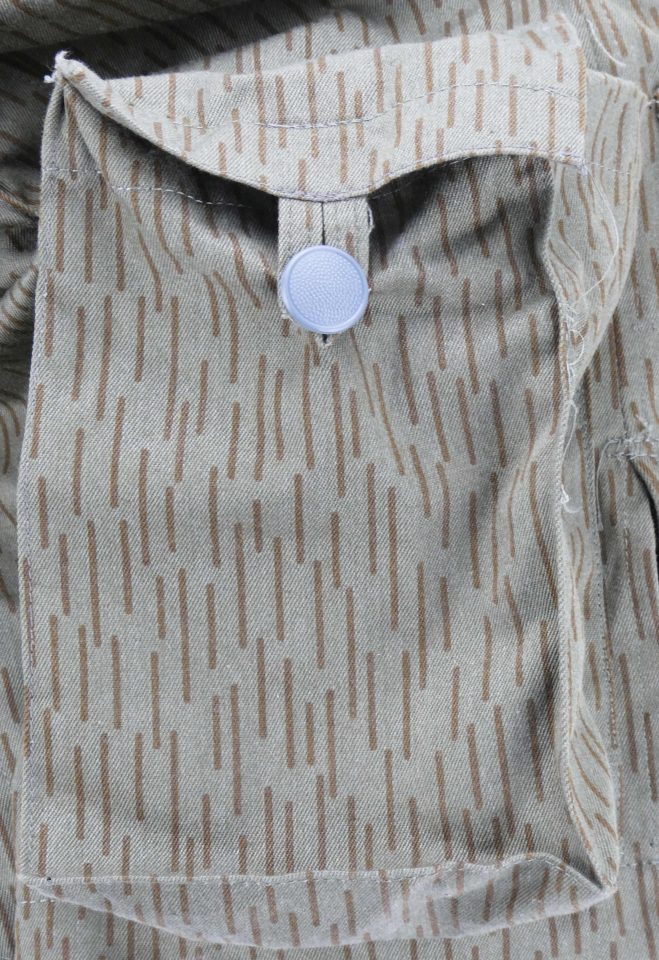
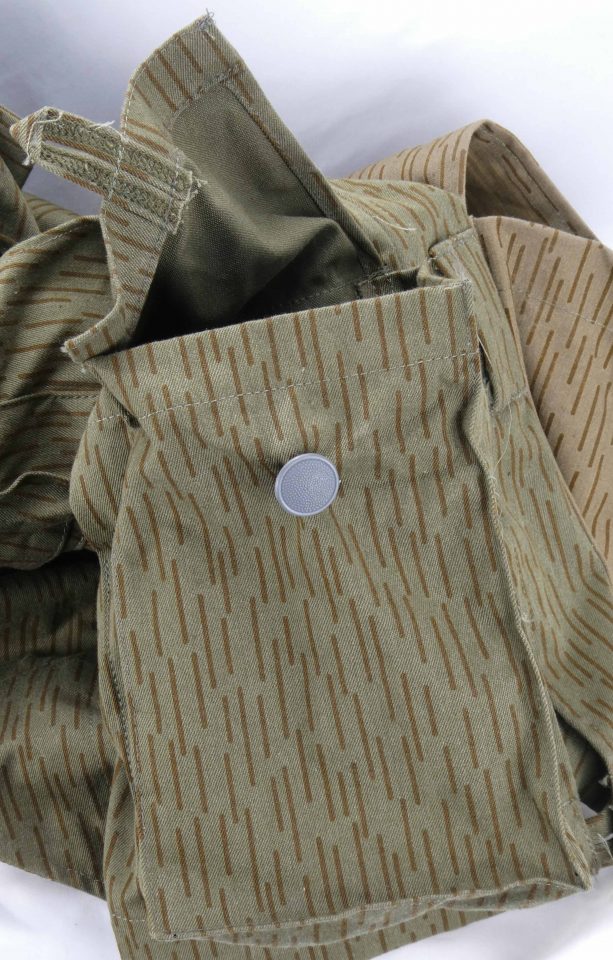
On the front in the bottom left side. Meant to hold an SchM-41 gas mask.
Magazine Pouch:
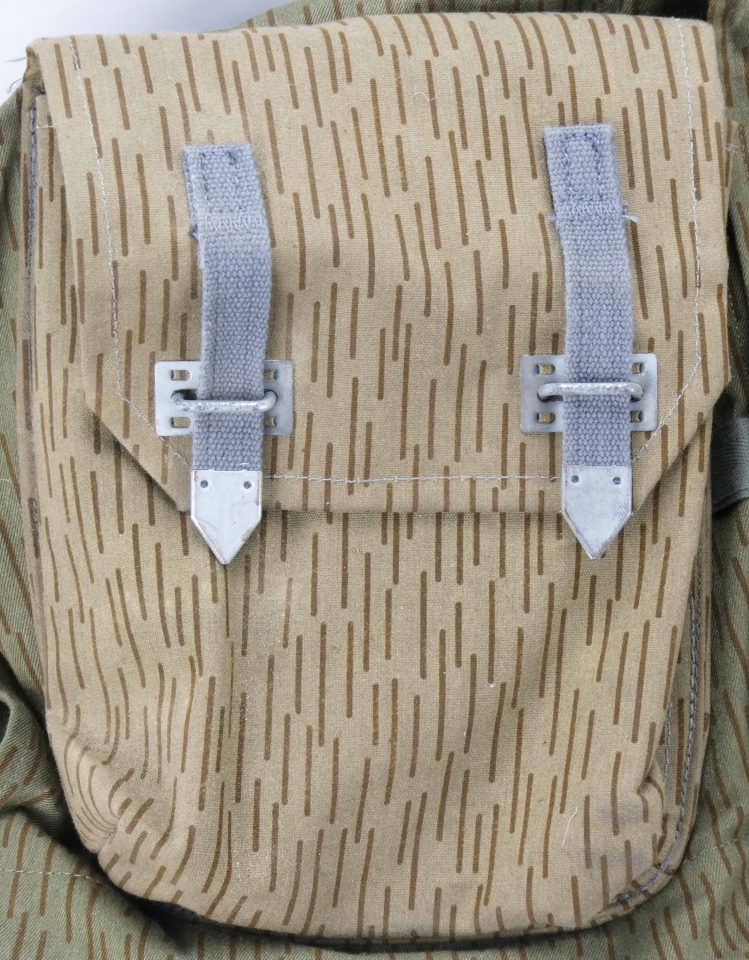
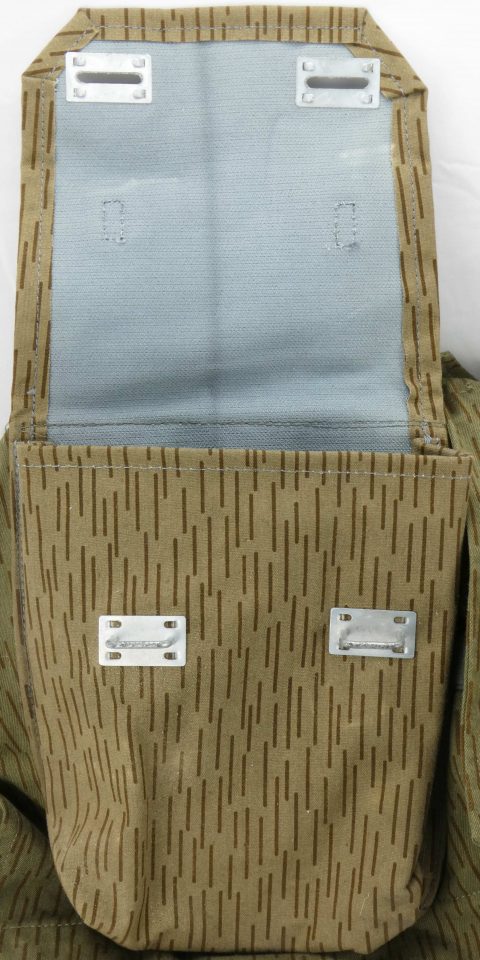
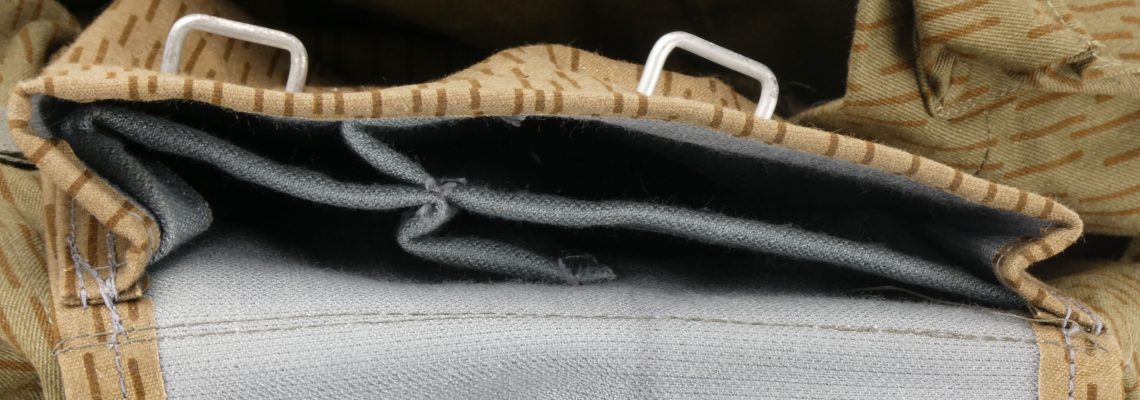
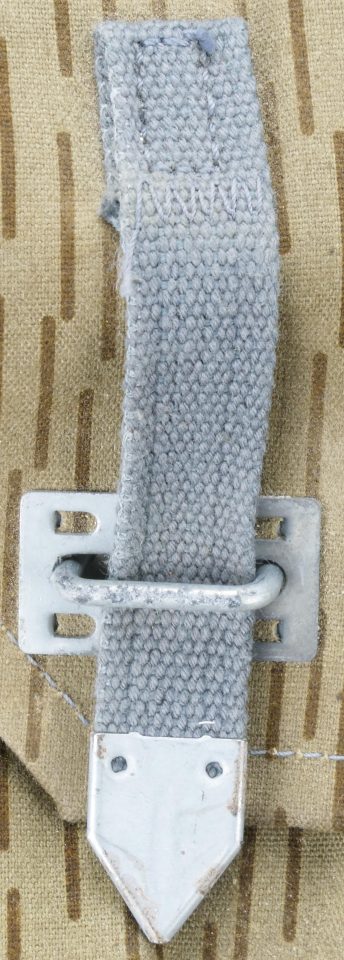
Same design as standard separate belt-mounted East German AK magazine pouch. Like all pouches on the vest, this is stitched onto the main body.
Upper Back Pack:

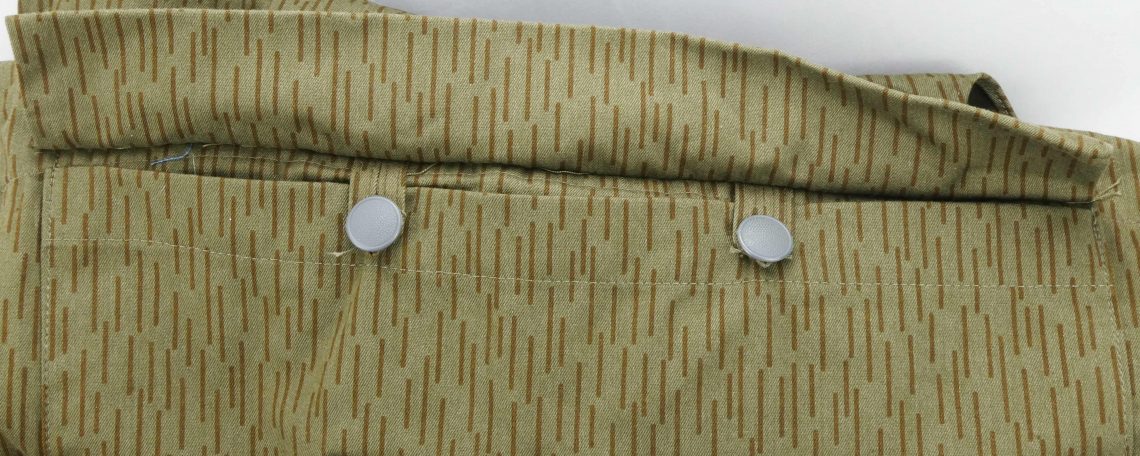
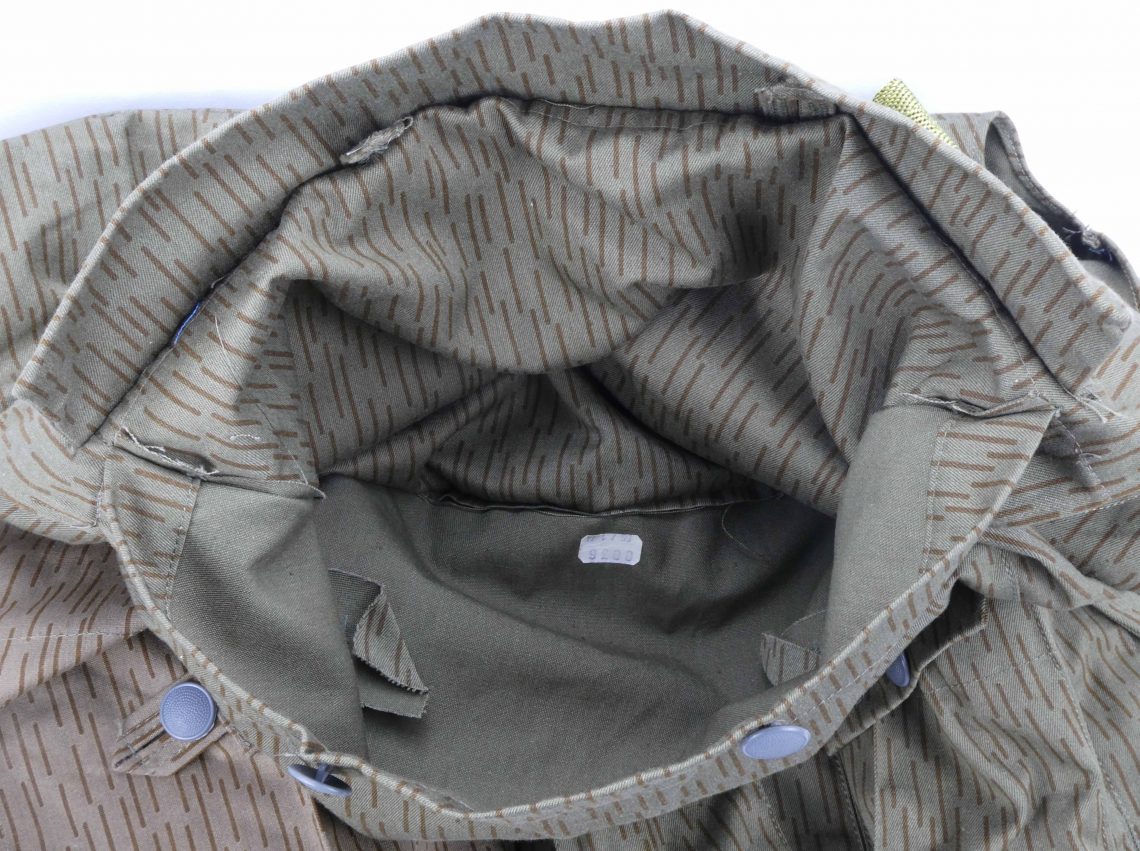
Backpack is a patch pocket on upper back. Loops above the flap are meant to attach a chemical protective cape (Schutzbekleidungsumhanges, SBU). These do not have any metal hooks attached, a characteristic of the last East German Fallschirmjager vests.
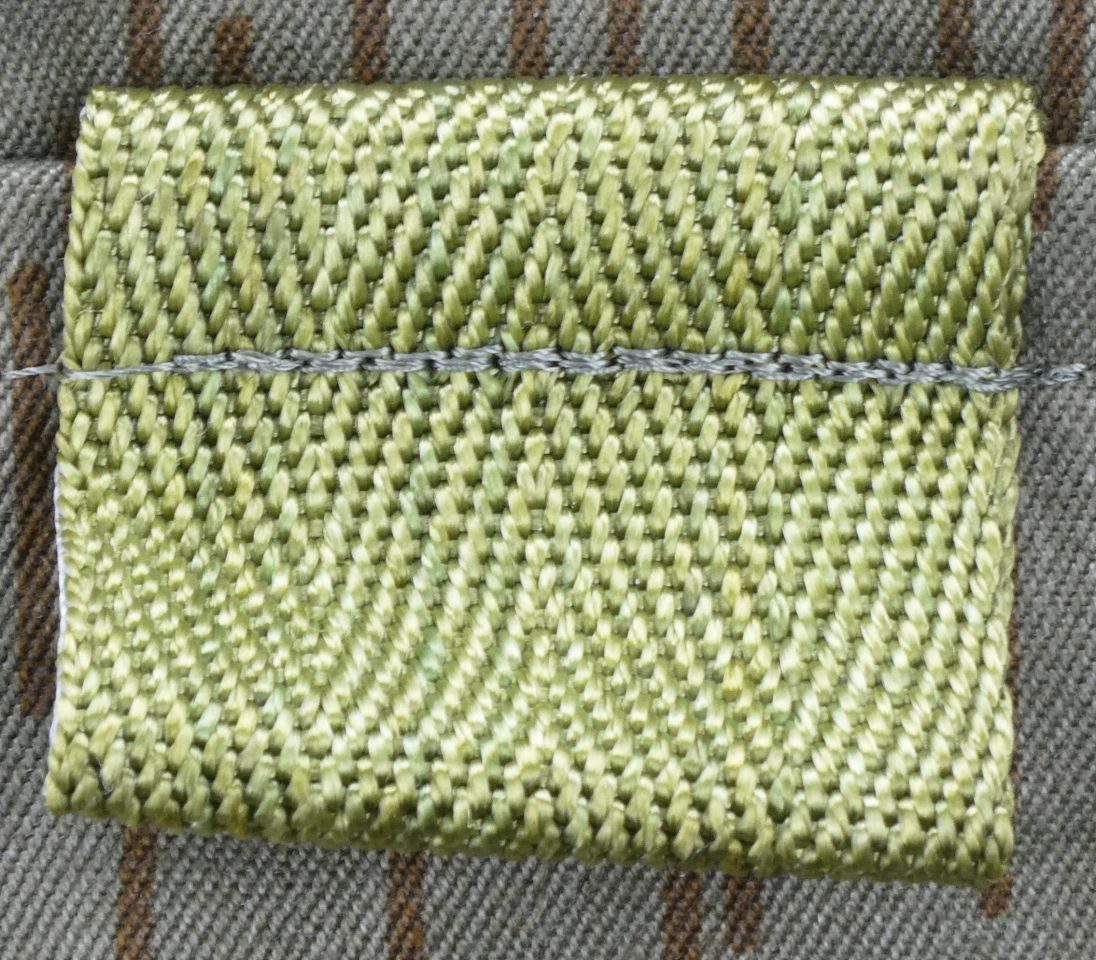
Loops are a synthetic webbing material.
Sticker inside pack:
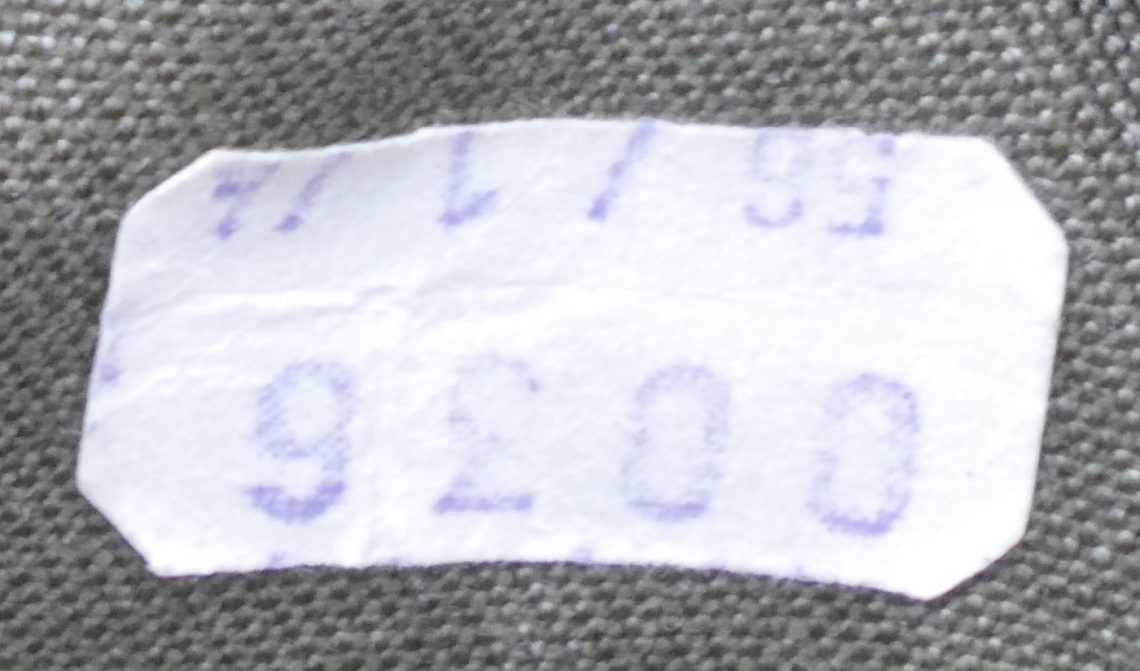
Back Gas Mask Filter/Canteen Pouch:
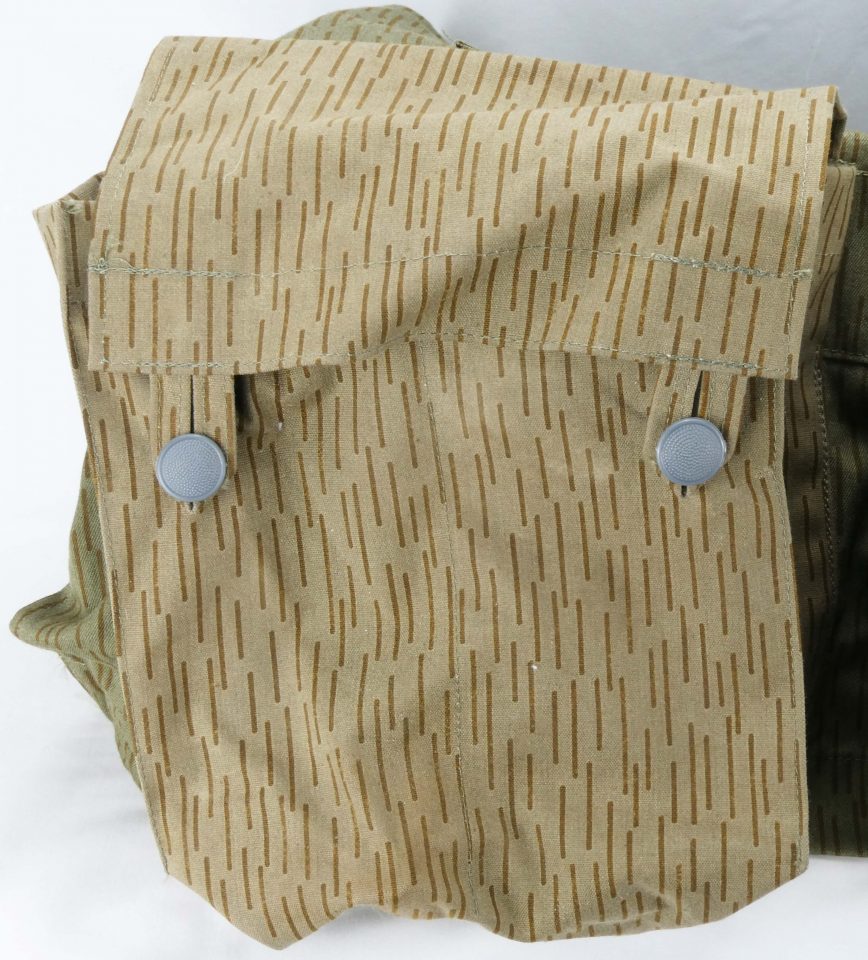

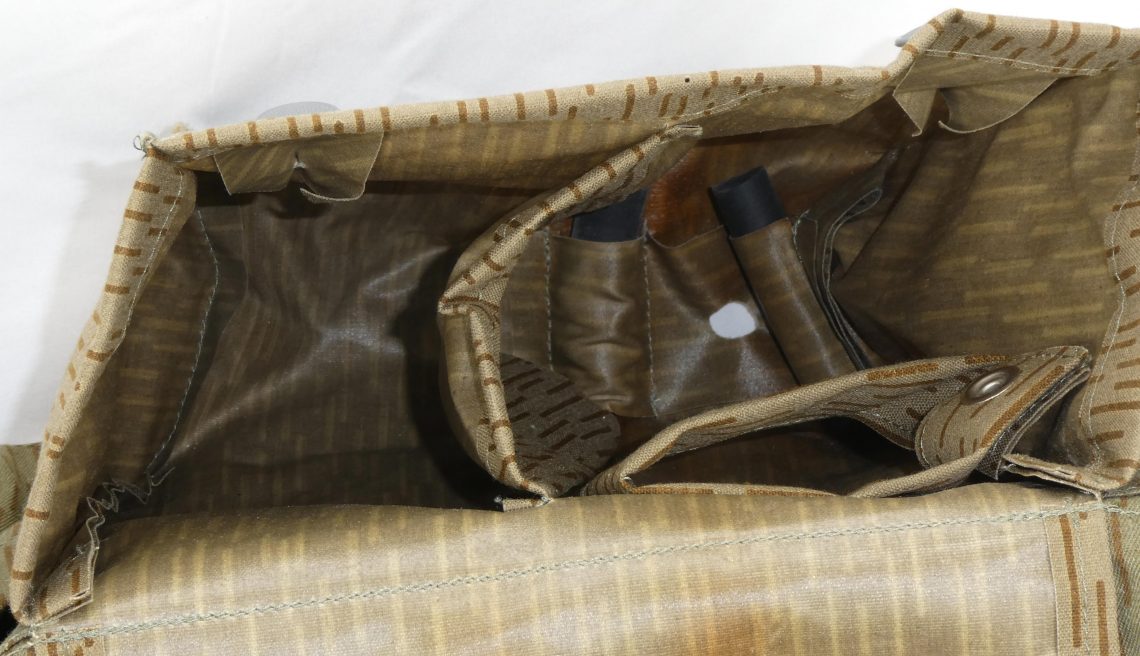
Holds 2 gas mask filters and a canteen. Made from synthetic material.
Bottom Back Small Pouches:
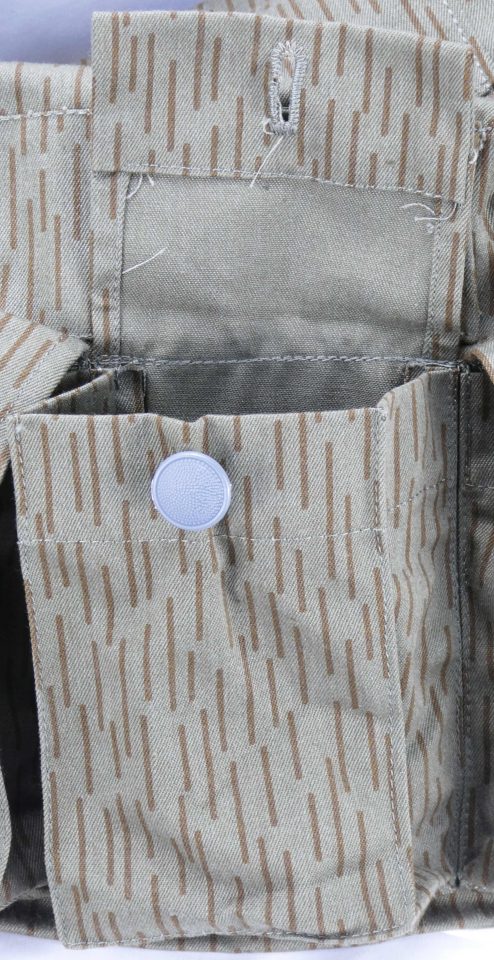
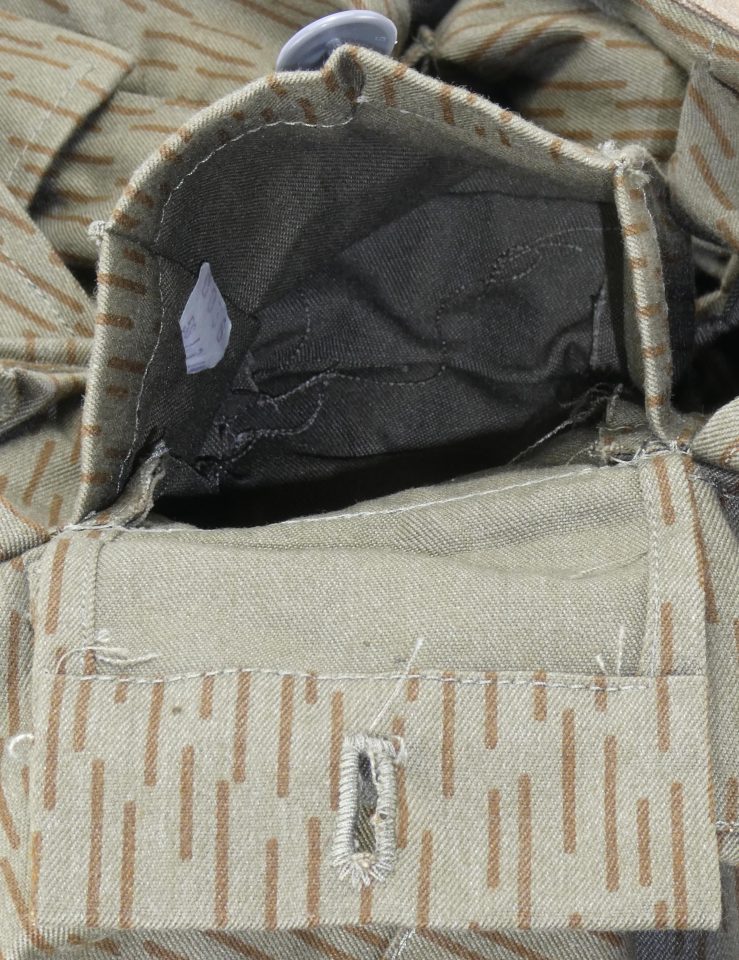
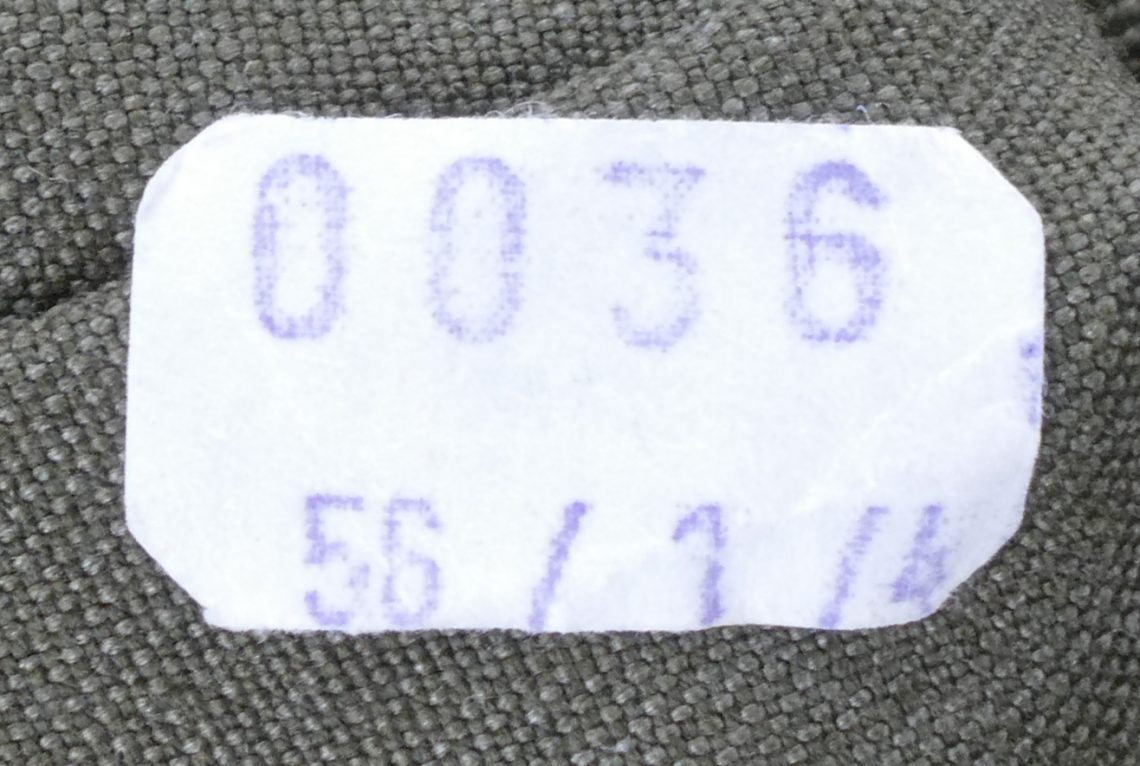
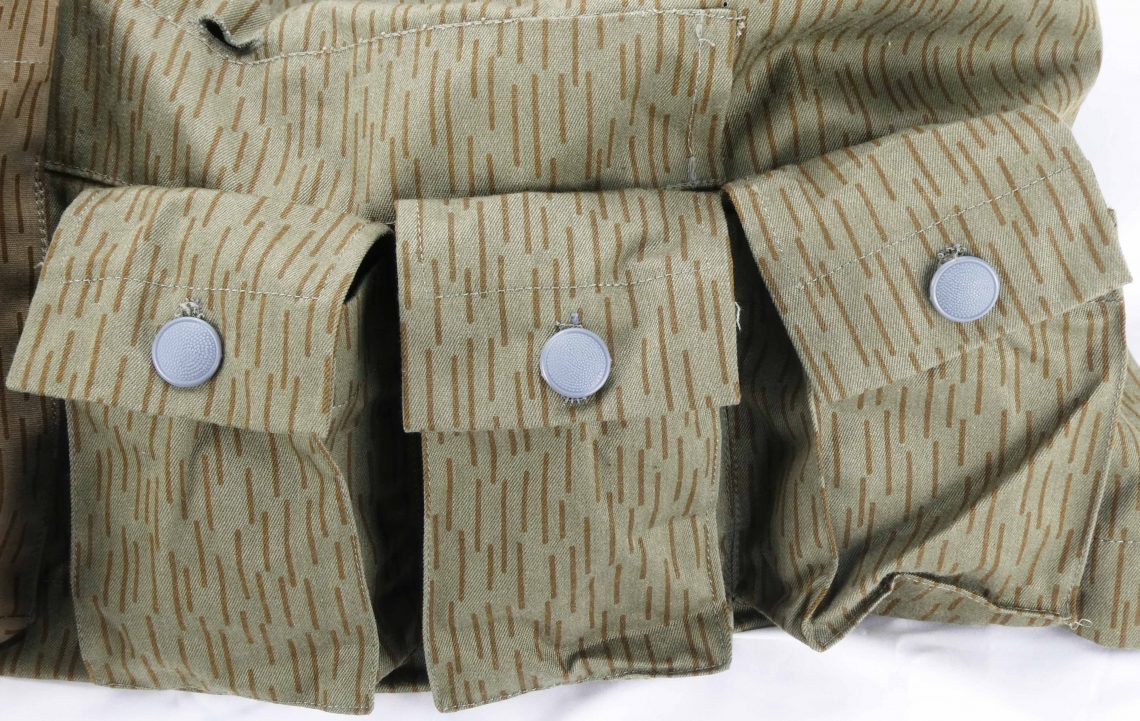
General purpose for a thin rain jacket, bandages, and other small items.
Hooks:
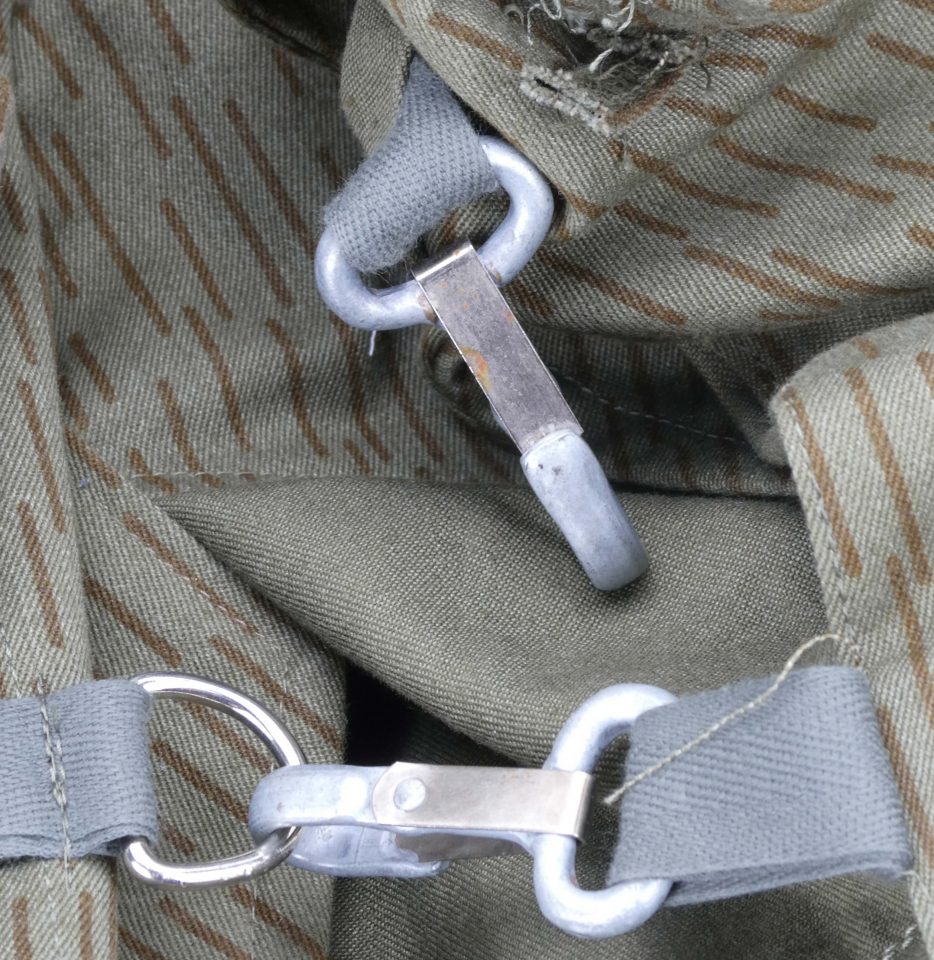
Body of vest is secured by snap hooks.
Inside:
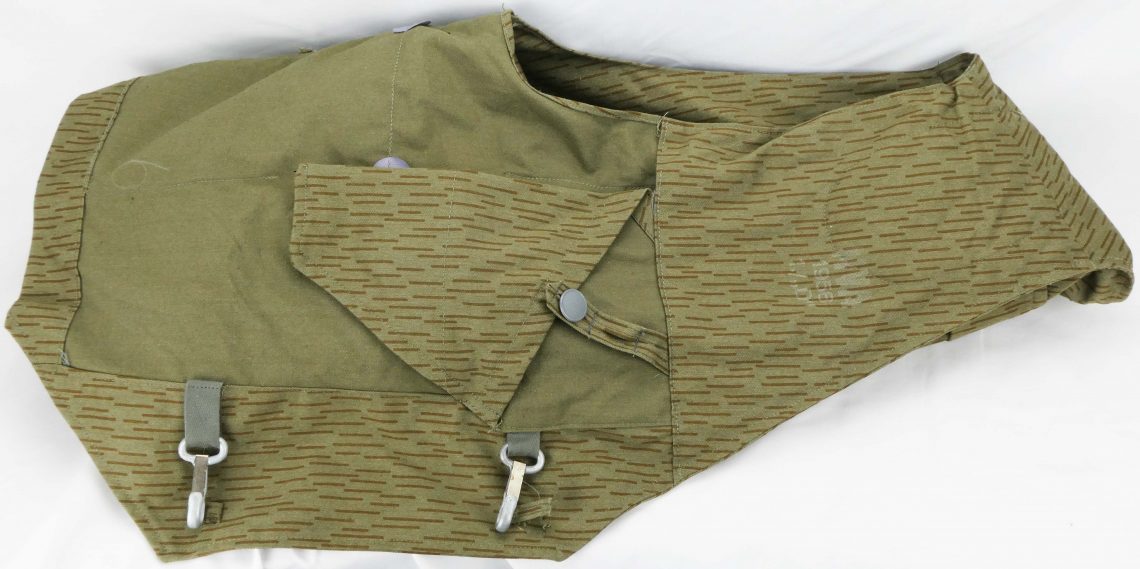
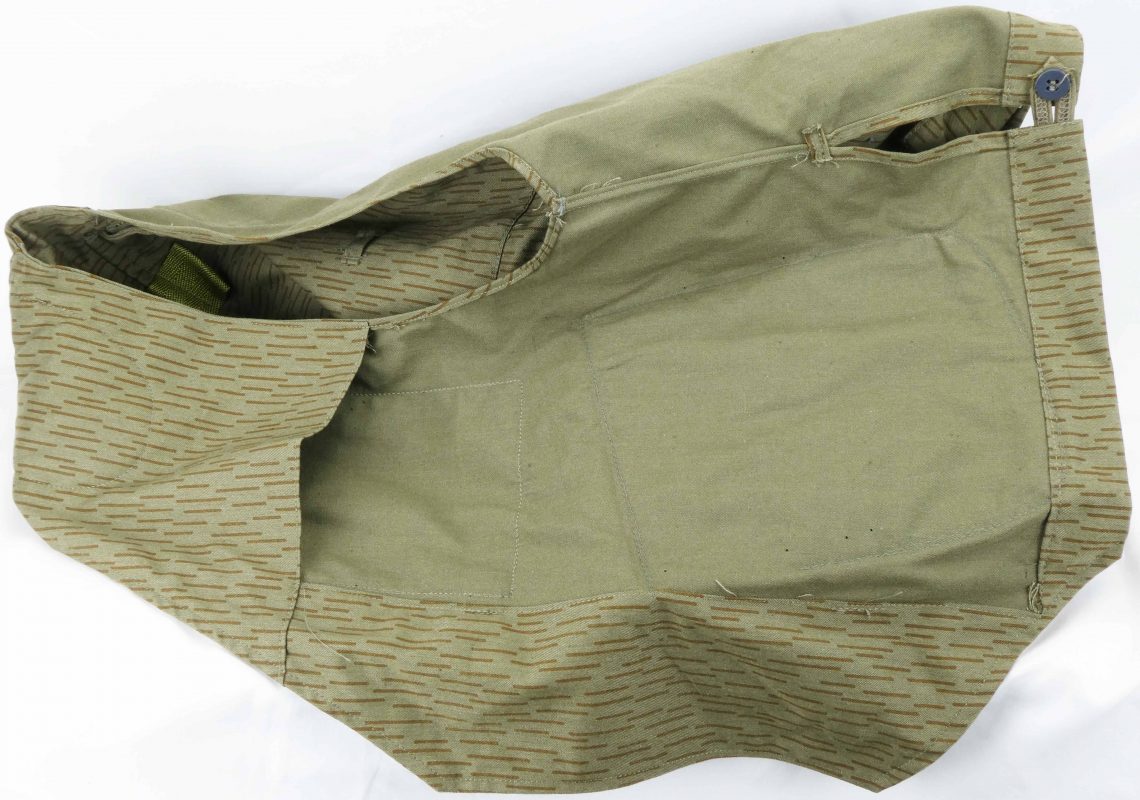
Holster on inside of left side (as worn). A fragment of a Makarov holster was found inside:
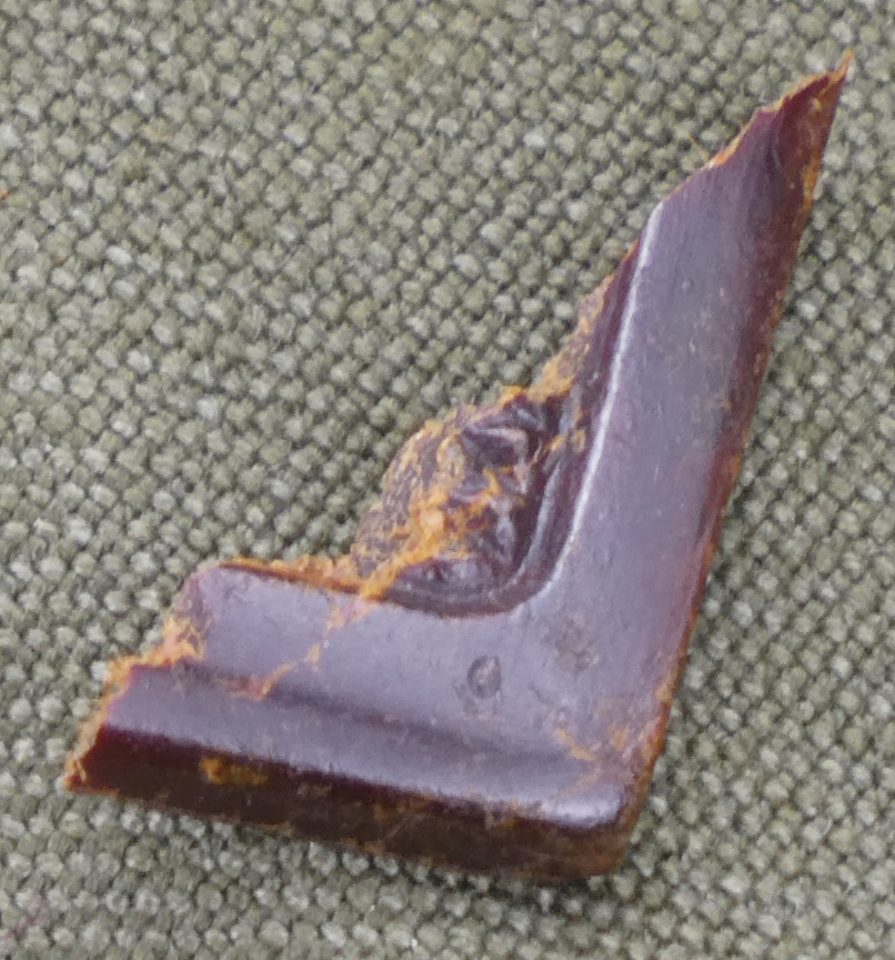
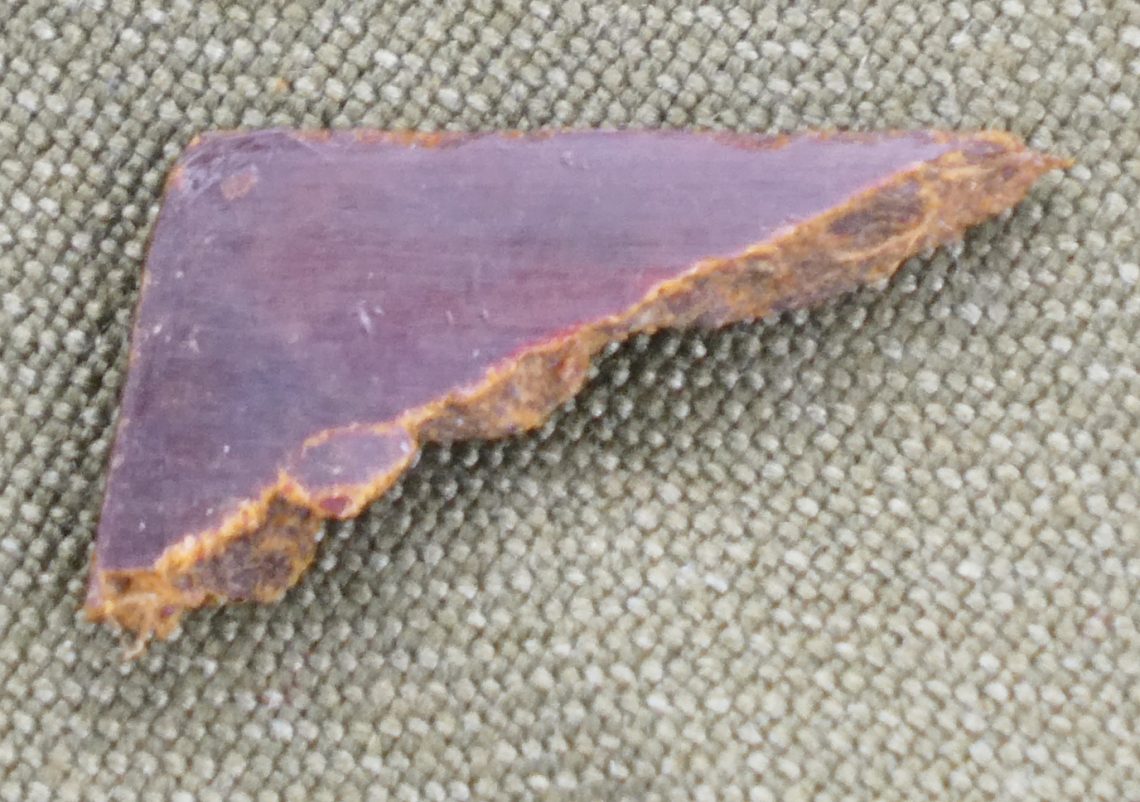
Stamp:
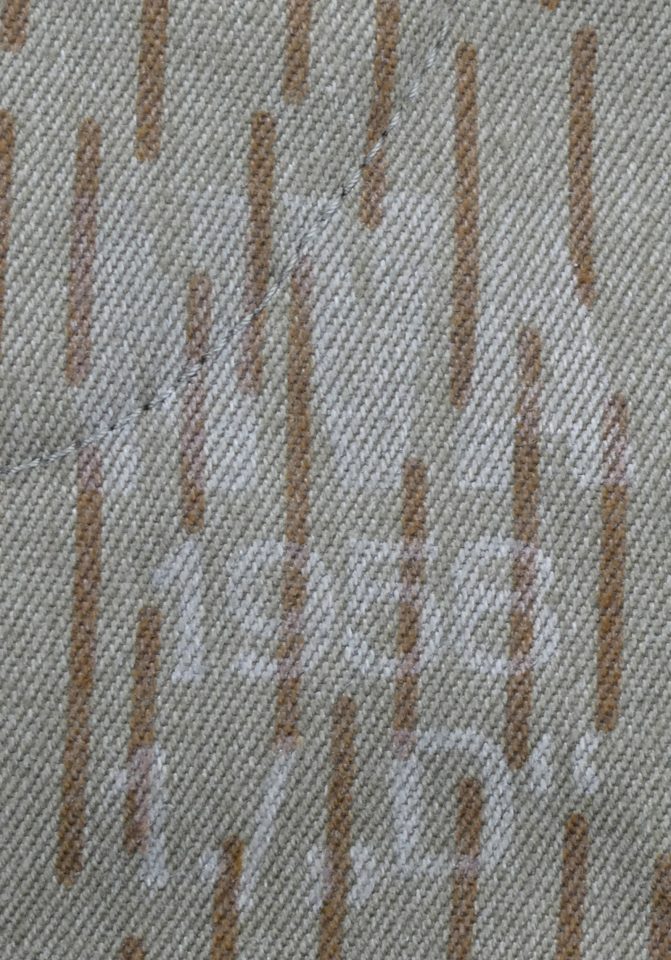
1/D stamp indicates 1st quarter of 1990 [1], after the fall of the Berlin Wall and just before East and West Germany reunified [4][5].
Tag:

Size tag.
Pocket Contents Diagram:
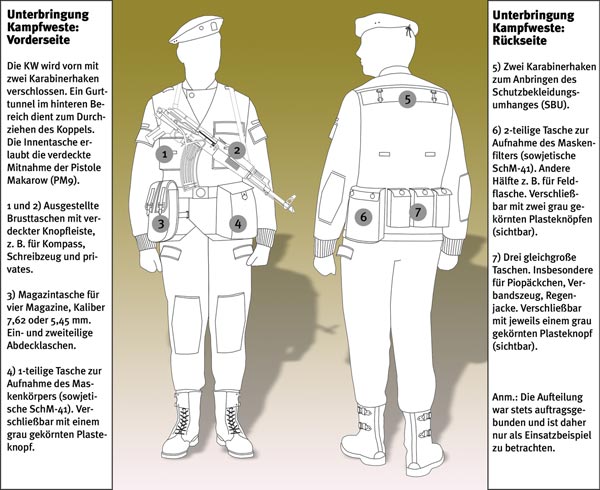
3: Magazine pouch for 4 AK magazines (works for both 7.62 and 5.45mm caliber). One piece with 2-piece cover flaps.
4: 1-piece bag for holding the mask body (Soviet SchM-41). Can be closed with a gray plastic button.
5: Two snap hooks for attaching the protective clothing cape (SBU).
6: 2-part bag for holding the mask filter. Other half … for canteen. Can be closed with two gray grained plastic buttons (visible).
7: Small pouches for general purposes. Holds small items like bandages, a thin raincoat, and other small items.
Note: The allocation was always order-related and is therefore only to be considered as an example. [6]
Beret:
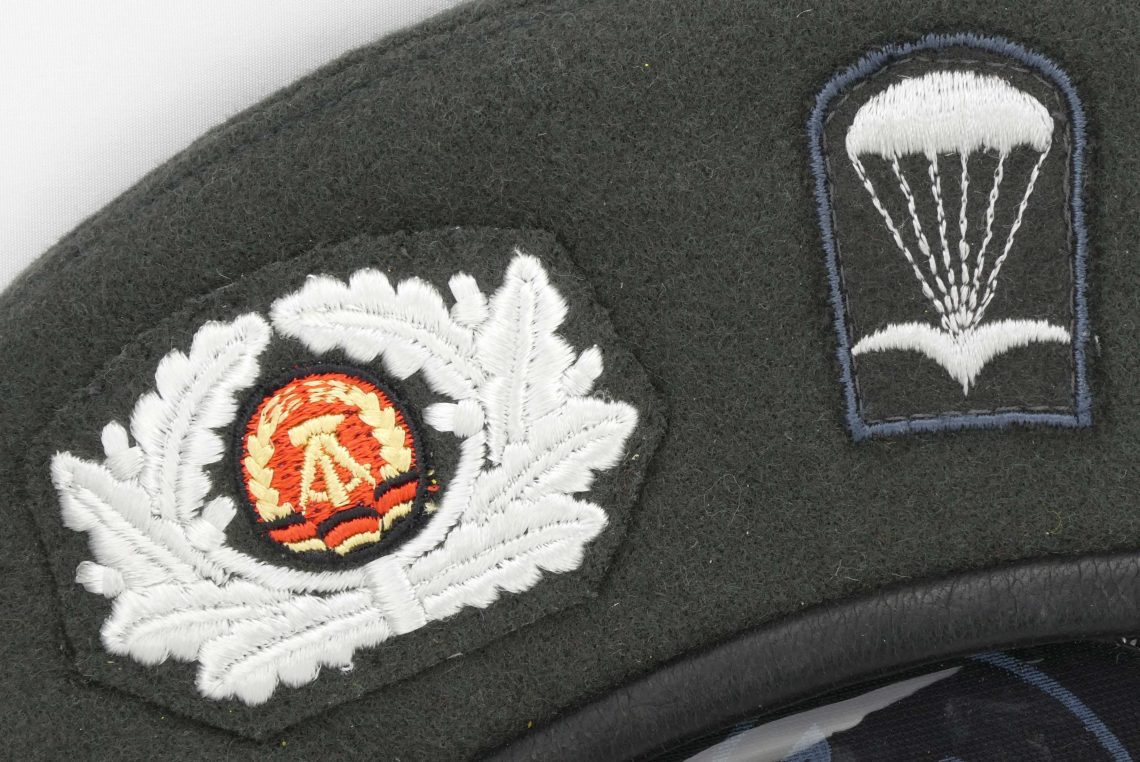
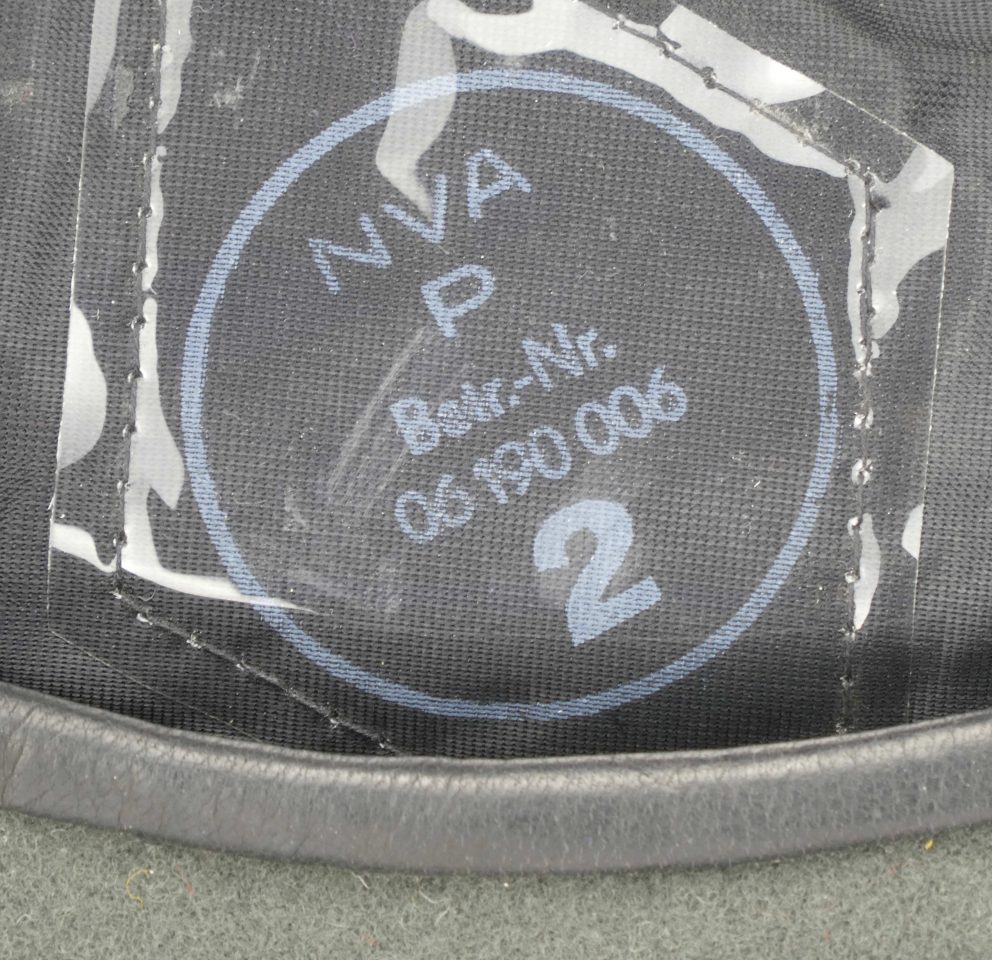
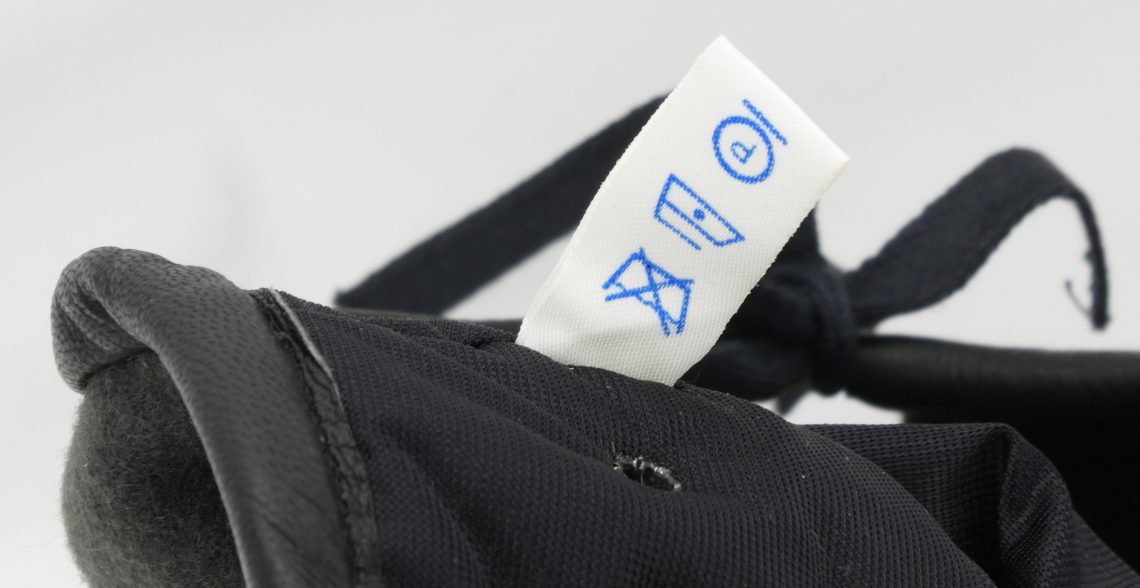
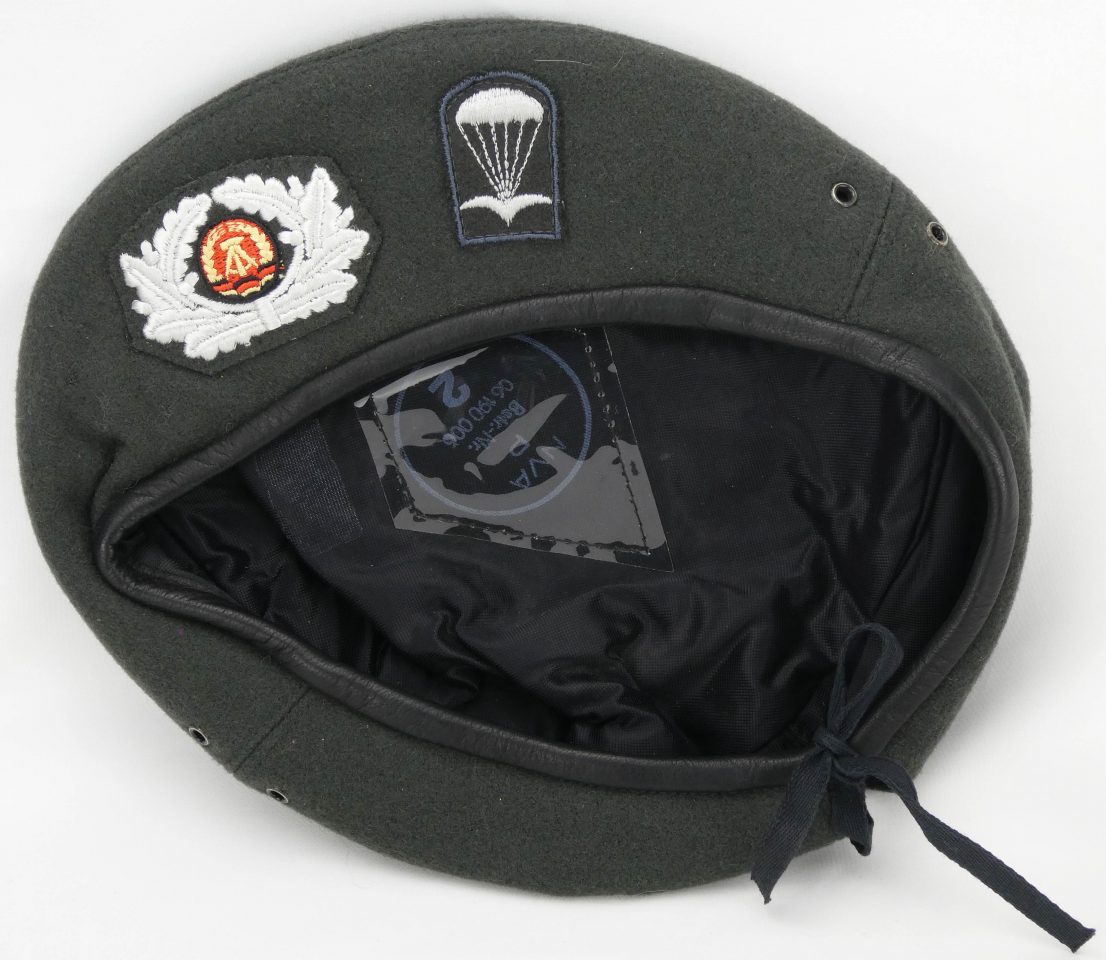
Grey beret was for field use. “P” marking means this was made in 1986 [1].
